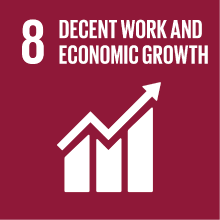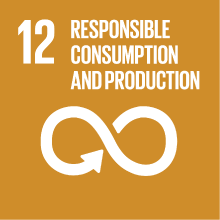HISTORY OF BRANDING
- Academic year
- 2022/2023 Syllabus of previous years
- Official course title
- STORIA DEL BRAND
- Course code
- EM7031 (AF:386107 AR:213830)
- Modality
- On campus classes
- ECTS credits
- 6
- Degree level
- Master's Degree Programme (DM270)
- Educational sector code
- SECS-P/12
- Period
- 1st Term
- Course year
- 1
- Moodle
- Go to Moodle page
Contribution of the course to the overall degree programme goals
The aim of the course is to offer students theoretical and practical skills allowing them to be able to use the history of the firm to:
1) understand the value of the brand and the way in which firms built their brand;
2) identify successful and unsuccessful brand strategies;
3) Being able to evaluate, build and manage brands
Expected learning outcomes
1) understand the origins and evolution of the main concepts connected to the history of brand
2) have a fair understanding on how the history of the firm can be used as an instrument for brand management
3) enlist and explain examples and historical case studies on strategies that different firms used to build their brand in different time periods and sectors
4) recognize different branding forms and strategies and the difference between trademark and brand
5) be able to choose the best methods and techniques to give value to different typologies of goods and services and manage brands
6) develop a critical approach to the main theories and studies related to brand management
7) have a fair knowledge of basic qualitative tools for research in history of management and marketing
Pre-requirements
Contents
Week 1: Brand, reputation and competitiveness
Brand: definitions
Brand Management and business history
Heritage Management
Trademark and Brand: a short history
Week 2. When and how brands became assets? Quando e come sono nati i grandi brands nella storia?
- Brand and big business
- Cases: General Motors and Shell UK
- Heritage marketing and its tools: corporate museums, historical archives and other corporate initiatives.
Week 3. Brand and nation branding in history
- Nation branding: the case of Danish Modern
- The origins of Made in Italy
- Fashion and food: uses and abuses of Made in Italy label
Week 4. The uses of the past and story telling in brand and heritage marketing
- Storytelling and brand: Cristian Dior and Longines
- Brand heritage and Automotive Industry
- Guest lecture (TBD)
Week 5. Global Brands: how they did survive?
- global brands and entrepreneurship
- Unilever: chains and brand wars
- Wrapping up.
Referral texts
Scientific Literature
o Carlo Marco Belfanti (2015) Renaissance and ‘Made in Italy’: marketing Italian fashion through history (1949–1952), Journal of Modern Italian Studies, 20:1, 53-66, DOI: 10.1080/1354571X.2014.973154
Carlo Marco Belfanti, Imitare, copiare e contraffare per competere nell’Europa preindustriale, in M. Belfanti (a cura di), Contraffazione e cambiamento economico. Marche, imprese, consumatori. Egea, 2012.
Teresa da Silva Lopes and Mark Casson (2007), Entrepreneurship and the Development of Global Brands, Business History Review, 81, 651-680.
Pierre-Yves Donzé and Ben Wubs (2019), Storytelling and the making of a global luxury fashion brand: Christian Dior, International Journal of Fashion Studies, 6(1):83-102.
Per H. Hansen, Cobranding Product and Denmark in the US, 1940-1970, in Teresa da Silva Lopes and Paul Duguid (eds.) Trademarks, brands and competitiveness (New York: Routledge, 2010), pp. 77-101.
Michael Heller, Corporate Brand Building. Shell-Mex Ltd in the Interwar period in Teresa da Silva Lopes and Paul Duguid (eds.) Trademarks, brands and competitiveness (New York: Routledge, 2010), 194-212.
Roland Marchand (1991), The Corporation Nobody Knew: Bruce Barton, Alfred Sloan, and the Founding of the General Motors “Family.” The Business History Review, 65(4), 825–875.
Elisabetta Merlo & Mario Perugini (2020) Making Italian fashion global: Brand building and management at Gruppo Finanziario Tessile (1950s‒1990s), Business History, 62:1, 42-69, DOI: 10.1080/00076791.2017.1329299
Peter Miskell, Unilever’s (Other) Brand Wars Retailers, Private Labels, and Struggles for Supremacy within Product Supply Chains, in Teresa da Silva Lopes and Paul Duguid (eds.) Trademarks, brands and competitiveness (New York: Routledge, 2010), pp. 215-233
M. Montemaggi, Heritage Marketing. La storia dell’impresa italiana come vantaggio competitivo. Franco Angeli, 2007.
Valeria Pinchera & Diego Rinallo (2020), The emergence of Italy as a fashion country: Nation branding and collective meaning creation at Florence’s fashion shows (1951–1965), Business History, 62:1, 151-178.
Matt Urde, S.A. Greyser, John T. Balmer, Corporate Brands with a Heritage, Working Paper No 07/18 July 2007
K. P. Wiedman, S. Schmidt, N. Hennigs, “Drivers and Outcomes of Brand Heritage. Consumers’ Perception of Brand Heritage in the Automotive Industry”, The Journal of Marketing Theory and Practice, , vol. 19, no. 2 (spring 2011), pp. 205–220.
Mira Wilkins (1992), The Neglected Intangible Asset: The Influence of the Trade Mark on the Rise of the Modern Corporation, Business History, 34:1, 66-9.
Assessment methods
Work project and presentation (25%)
Written exam (75%)- 1 question, 2 hours, handwriting
Non attending students:
Written exam (100%) - 2 questions, 2 hours, handwriting
Type of exam
Teaching methods
Teaching language
2030 Agenda for Sustainable Development Goals
This subject deals with topics related to the macro-area "Circular economy, innovation, work" and contributes to the achievement of one or more goals of U. N. Agenda for Sustainable Development


